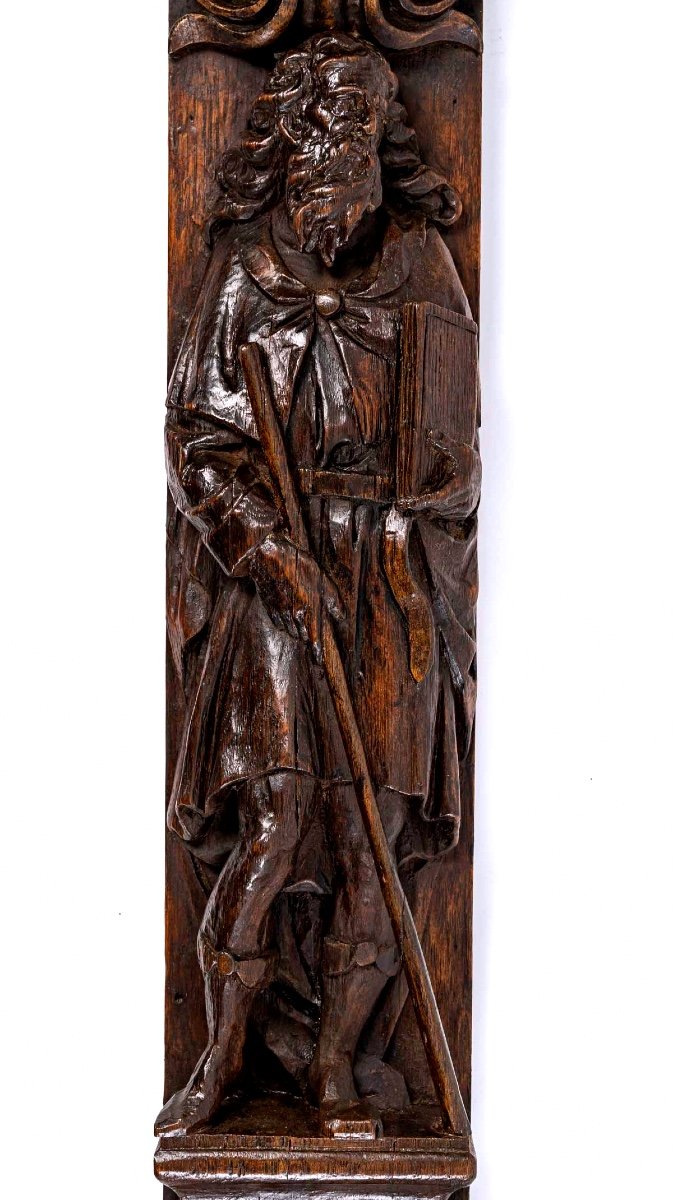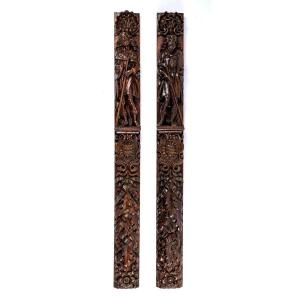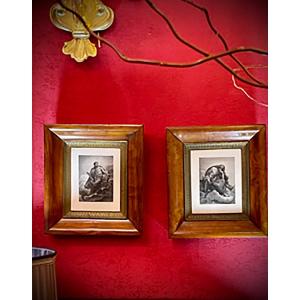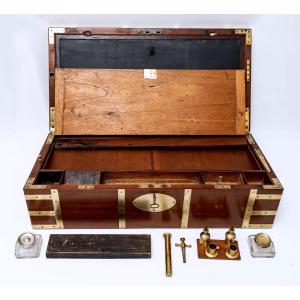The first panel reveals a pilgrim apostle, under an enormous sculpted scallop shell, like a halo, a majestic, bearded old man, dressed in a long coat and a cape adorned with scallop shells (the most recurrent attribute since the 12th century, which represents the accomplishment of the pilgrimage and rewards the arrival at Compostela), gaze filled with faith, turned to the right, holding in his right hand his hat with raised brim and in his left hand his staff of pilgrim.
Under these feet, we have the sun struck in the heart of the coat of arms of Catalonia coming to sublimate an exceptional frieze of oak leaves and flowers symbolizing generous strength, resistance, solidity and invincibility.
In Ancient Greece, it is also the symbol of Freedom and Honor. Its oak leaves and branches were used to crown the winning athletes of sporting events.
The second panel reveals an evangelizing apostle, also a majestic old man, bearded, haloed with his scallop shell, dressed in a long coat and a cape, his gaze full of faith turned to the left with in his right hand, his pilgrim's staff and in his left hand the book of good news.
Under these feet are represented the sun struck in the heart of the coat of arms of Catalonia, sublimating an exceptional frieze of oak leaves and flowers, bringing solidity, invincibility and honors.
Period: 17th century
Dimensions: Height: 122cm x Width: 12cm
These two magnificent representations of Saint Jacques are a very beautiful tribute to the Treaty of the Pyrenees, signed on November 07, 1659 between the Kings of France Louis XIV and Philippe IV of Spain, which relates Roussillon to France.
Since the 12th century, a multitude of pilgrims have taken the Catalan roads to get to Santiago.
One of the most famous of them was Saint-François d'Assise who stopped in Perpignan in 1211 and 1215, on the outward and return journey of his pilgrimage to Santiago de Compostela.
On this occasion, he created the Franciscan monastery there to welcome pilgrims.
Nowadays, the itinerary "Chemin Catalan", established as the Way to Saint-Jacques, comes from Montpellier, Béziers and Narbonne. It joins Spain at the Col de Panissars and continues in southern Catalonia.


















































 Le Magazine de PROANTIC
Le Magazine de PROANTIC TRÉSORS Magazine
TRÉSORS Magazine Rivista Artiquariato
Rivista Artiquariato